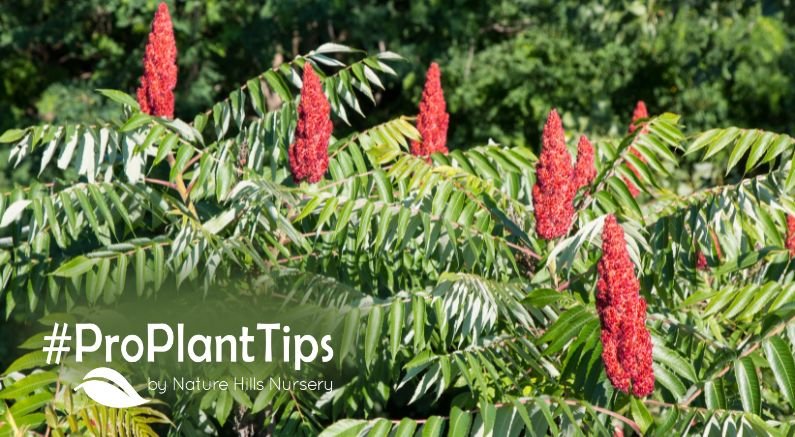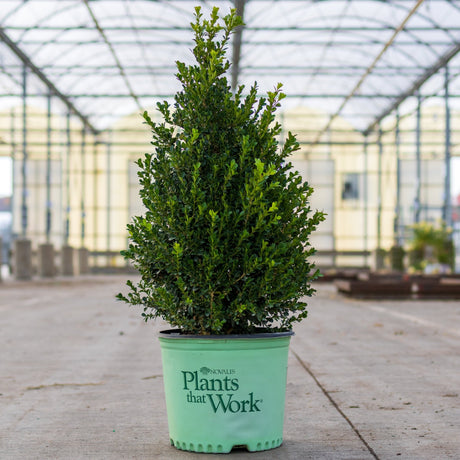Tough Beauty With Easy-Care Brilliance

Sumac shrubs (Rhus) are some of the most underappreciated native plants in North America. Known for fiery fall foliage, wildlife-friendly berries, and fern-like leaves, they offer so much more than autumn color. These tough shrubs thrive in poor soils, hot sun, and drought, even tolerating urban pollution, making them go-to choices for low-maintenance landscapes.
With their bold textures, tropical-looking leaves, and dramatic clusters of berries, Sumac shrubs make gardens pop in every season. Whether used for erosion control, wildlife habitat, or just that unforgettable splash of red-orange autumn brilliance, Sumac is one of those plants you'll wonder why you haven't grown it sooner. Here's everything you need to know about planting, growing, and caring for Sumac bushes.
About Sumac Shrubs
The genus Rhus contains around 200 species, with Smooth Sumac (Rhus glabra) and Staghorn Sumac (Rhus typhina) being some of the most common across the U.S. Unlike Poison Sumac (Toxicodendron vernix - previously Rhus vernix), the ornamental varieties offered by Nature Hills are non-toxic, ornamental, and wildlife-friendly.
Members of the Cashew family (Anacardiaceae), these shrubs include both deciduous and evergreen species worldwide, though in the U.S., most are deciduous.
Indigenous peoples used Sumac bark, leaves, and fruit for dyes, leather tanning, medicine, and even beverages like Sumac-ade. Today, the dried, ground fruit remains a popular spice in Middle Eastern cuisine, adding tangy, lemon-like flavor to salads and meats.
Flowers, Fruit & Foliage

-
Flowers: Tiny creamy, yellow, or white panicles in late spring attract bees, wasps, beetles, and butterflies. Fragrant Sumac (Rhus aromatica) in particular is a pollinator magnet and supports over 50 species of Lepidoptera, including Luna Moths and Hairstreak butterflies.
-
Fruit: Female plants produce bold red "Sumac bobs" - cone-shaped drupes that persist into winter. These high-tannin fruits feed over 300 species of songbirds as well as game birds like quail and turkey. They also provide late-season nectar for beneficial insects.
-
Foliage: Pinnately compound leaves give Sumac a graceful, tropical appearance. Some species, like Fragrant Sumac, have aromatic tri-lobed leaves that release a spicy scent when crushed. Staghorn Sumac features fuzzy, velvet-like stems that inspired its common name. Autumn foliage can blaze in shades of scarlet, orange, and maroon, rivaling even the finest maples.
- Roots & Growth Habit: Shallow, spreading roots send up suckers, forming colonies or naturalized thickets. This makes Sumac excellent for erosion control, slope stabilization, and wildlife cover. Open branching and airy foliage provide shelter and nesting spots for birds.
How to Plant Sumac
- Site Selection: Choose a sunny to lightly shaded site with well-drained soil. Sumac tolerates sandy, gravelly, and rocky soils better than most shrubs.
- Planting: Dig a hole twice as wide as the root ball but no deeper. Place the shrub, backfill with native soil, and water thoroughly.
- Mulching: Apply a 3-4 inch mulch layer to conserve moisture, suppress weeds, and protect roots. Keep mulch away from the base of stems.
Growing & Caring for Sumac

-
Soil: Thrives in poor, sandy, or rocky soils. Slightly acidic to neutral is ideal, though it's tolerant overall. Avoid waterlogged conditions.
-
Sun: Best in full sun for maximum fall color, but many species tolerate partial shade, true to their understory nature.
-
Water: Water deeply the first growing season to establish roots. Once mature, Sumac is very drought-tolerant. Supplemental water in extreme drought helps foliage color stay vibrant.
-
Fertilizer: Rarely needed. If growth appears weak, apply a balanced slow-release fertilizer in spring.
-
Pruning: Best done in late winter or very early spring. Try renewal pruning every 3-5 years by removing the oldest stems to encourage fresh, vigorous shoots. Light shaping is fine, but avoid heavy shearing.
-
Colonies & Suckers: Sumac spreads by root suckers. Trim or mow back unwanted shoots to keep colonies in check, or let them naturalize for mass plantings and erosion control.
- Pests & Problems: Generally pest and disease-free. Occasionally, leaf spot or rust may appear, but it rarely harms overall plant health.
Wildlife Benefits
Sumac is a powerhouse for pollinators, birds, and mammals!
In summer, pollinator insects visit its flowers, while fall and winter bring flocks of birds to feast on the fruits.
Deer browse lightly on young shoots but typically leave mature shrubs alone.
Planting Sumac in drifts creates wildlife corridors, cover, and year-round food sources for everything from backyard songbirds to wild turkey and quail.
Sumac Care is Simple!
Hardy, low-maintenance, and wildlife-friendly, Sumac shrubs are perfect for gardeners who want year-round impact with minimal fuss. With fiery fall color, fuzzy branches, aromatic leaves, and bird-friendly berries, these shrubs deliver in every season. From their colonial growth habit to their striking silhouette, Sumac is a true workhorse in the landscape!
Plant one and you'll see that it's a shrub that really sums up the best of Ma Nature's beauty!
Happy Planting!



























